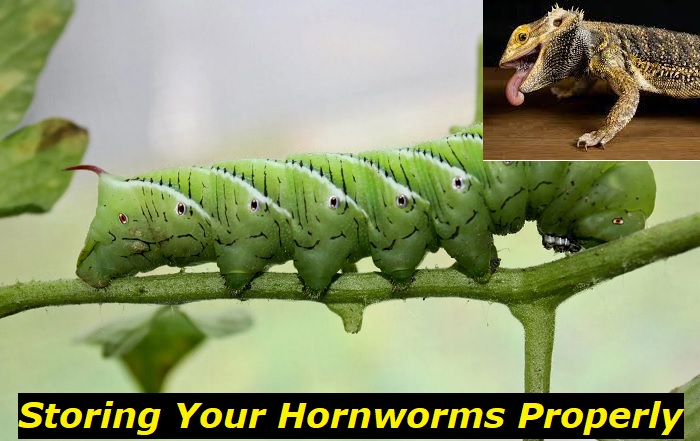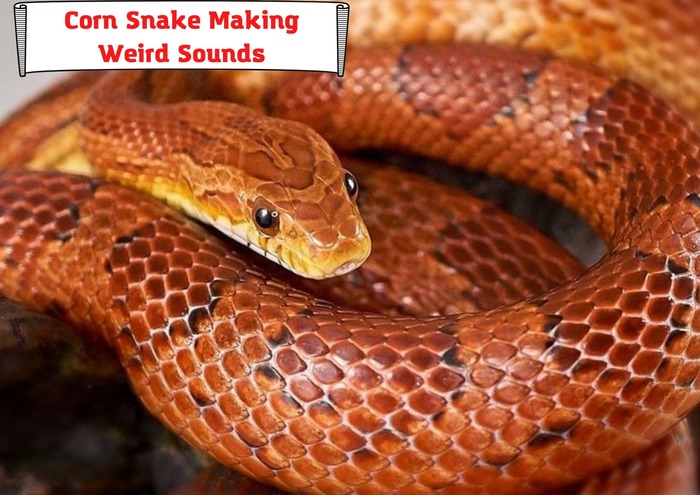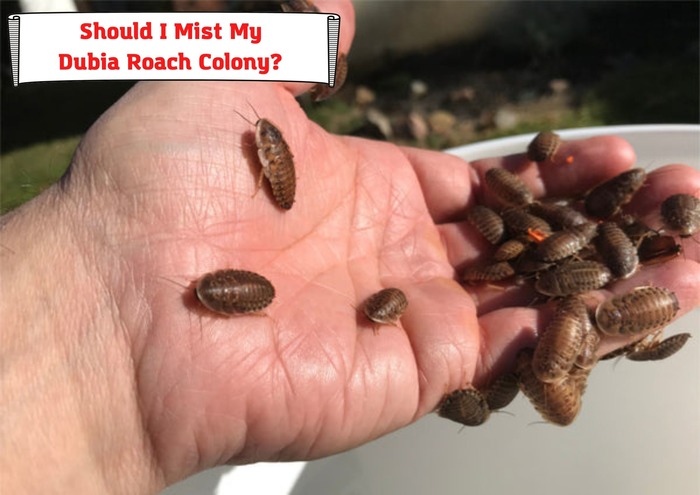Hornworms are a popular feeder insect among owners of small critters like bearded dragons. Many pet owners like this feeder insect because it is high in protein and calcium and has enough moisture to keep your beardie hydrated.
But getting hornworms when you need them and at the right size can be a problem. That is why many pet owners whose pets eat these feeder insects often think about how to store hornworms.

This article is the guide of storing hornworms. It also discusses five reasons hornworms are cool pets. Read on to find out!
Hornworms (Manduca sexta)
Other common names for this feeder insect are tobacco hornworms and Goliath worms. Hornworms are the larvae stage of the Tobacco hawk moth. Their life cycle takes about 4 to 7 weeks.
They are commonly used as feeder insects for exotic pets that thrive on insects. Some of these critters include reptiles and fish.
Captive-bred hornworms are preferred to wild-sought hornworms because the latter may have accumulated poisonous substances from the plants they fed on.
Hornworms are often sold in a prepacked pod, usually with all that the larvae need to survive. This makes keeping and caring easier.
How To Store Hornworms
Storing these lovely pet worms is pretty easy. When you order some hornworms, the package is delivered with all the care kits you need to keep your hornworms.
They come in a prepacked housing unit, usually a 32oz disposable water cup. This cup usually has a mesh cover to prevent the hornworm from escaping the housing unit. It also comes with a mesh that rises from the base of the cup and some food.
You want to place the cup upside down; the lid should be the base, so the food stays on top. This will ensure that the hornworm’s droppings fall to the base for easy removal. With this setup, all you have to do to remove the hornworm’s waste is open the lid, clean and close the lid back.
If you want to give your hornworm space for exploring, you can improvise with some materials. You can use a plastic container to make a spacious home for your hornworm.
First, you’ll need to provide ventilation. Cut some “windows” in the plastic container for aeration but ensure that you cover the opening with a fine mesh to prevent it from escaping. A hot glue gun is the best tool for this job, as regular gum may not hold the mesh in place for as long as the hot glue gun will.
Next, you want to provide a place for the hornworm to climb. You can do this by hot-gluing or stapling pieces of gutter guards to the plastic container.
Finally, provide food by placing the food at the top of the container. Do not provide the natural diet they are disposed to in their natural habitats. Most of the leaves they eat in the wild are toxic to reptiles.
It would be best to feed them with formulated hornworm chow. You can get this powdered formulated food from companies that sell hornworms.
Also, there is no need to provide a water source for hornworms. The specially formulated powdered hornworm chow provides enough hydration for them.
Can I Store My Hornworms in the Refrigerator?
The temperature has a significant effect on storing hornworms. Storing hornworms at an 80°f-82°f will speed their growth rate. But if you want them to grow slowly, keep them at 55°f. If they are out of food and you want to keep them alive for a few more days, you can keep them at 45°f. They will survive for up to 2 days.
You can stop their growth at the desired size by placing them in the refrigerator at 45°f for up to 48 hours. But you remove them after 48 hours to prevent their death.
However, this is a very risky growth management method.
You should never leave your hornworms in the refrigerator as they may die from the cold. You can adjust your air-conditioning unit to ensure your hornworms get the right temperature.
Do I Need to Separate my Hornworms into Different Containers?
When you get them, it would be best to separate your hornworms into separate containers. Separating them will ensure the healthiest growth rate since they will not be competing for food in the same container.
But you want to be very careful as you separate them. Hornworms are very delicate creatures. They do not have hard exoskeletons as many other feeder insects. If you are not careful with how you handle them, you could end up causing them serious injury.
What Can I Feed My Hornworm?
What can you feed your hornworms when they exhaust the food in the pack? Do not be in a rush to feed their natural food sources.
Hornworms eat a lot of leaves of plants in the nightshade family, especially the tomato plants. For the health and safety of your reptiles, it would be best not to feed hornworms with tomato leaves.
If you have, you do not want to use those hornworms as feeder insects as they can be dangerous for the health of your reptiles.
It would be best to get some hornworm chow for your hornworms. But if you can’t, you can feed them with your homemade paste. You’ll need the following ingredients to do this:
- A cup of non-toasted wheat germ
- A tablespoonful of sugar
- Half a cup of dry milk (non-fat)
- Four tablespoonfuls of agar
- One teaspoonful of flax seed oil
- Half a tablespoonful of brewer’s yeast
Start by combining only the dry components but the agar and the yeast. It would be best to mix them all with a blending machine. After mixing, remove the dry mixture. Add 2½ about 100cl of boiling water to the blending machine. Set the blender at the lowest speed and pour in the agar. Add the dry mix and continue mixing with the blending machine at the lowest speed.
Keep mixing at the lowest speed as you add the flaxseed oil. After mixing all the ingredients well, pour the hornworm chow into a flat plastic container and blend it with the yeast. Ensure that it has an airtight lid. Leave it in the fridge to harden.
It is important that you only serve dry foods. This will make keeping the cup clean and free of contamination easier.
5 Reasons They Make Cool Pets
1) Hornworms Are Becoming Popular Feeder Insects for Amphibians and Reptiles
Feeder insects are a great way to supply your reptiles with their natural appetite. There are many cool feeder insects, but the hornworms offer better benefits.
Since they offer many benefits, including the ease of care, compared to other insect feeders,
2) Hornworms Are Easily Digestible
Due to the very soft exoskeleton, hornworms are very digestible. Hornworms have low fat and low chitin.
Unlike many feeder insects with harder exoskeletons, the hornworm is a great choice because it has no exoskeleton. You can feed them to your younger bearded dragons since they have a harder time digesting chitin. Your baby beardies will find them very easy to digest.
Hornworms are also low fat. This makes them a great choice for your reptiles. But do not forget to supplement their diet with other nutritious foods.
3) Hornworms Are Pretty Easy to Store
They are easy to store because they come in a prepacked housing unit. The coolest thing about their housing units is that these prepacked units have food in them. The food is enough to last them for as long as you will need to keep them before feeding them to your reptiles.
You don’t need to have a hydration routine and feeding routine. The only maintenance you’ll have to do is open the lid to take out their poop.
4) Hornworms Are a Natural Hydration Source for Your Reptiles
Being about 85% hydration, hornworms are a great option for keeping your reptiles hydrated. Apart from feeding your reptiles high moisture fruits and vegetables, you can help them stay hydrated with insects by feeding them hornworms.
5) Hornworms Are Excellent for Triggering the Appetite of Picky Eaters
If you have a picky eater for a reptile, hornworms may just be the solution to your problem. Hornworms usually stimulate picky reptiles.
If your reptile does not find the green hornworms attractive, you can feed them the hornworms when they turn red.
Red hornworms are worms that are ready to pupate. They are safe for your reptile, and you can be sure that the color will attract your pet.
Final Thoughts
Hornworms are great feeder insects. Many reptiles love hornworms: leopard geckos, bearded dragons, turtles, etc.
They are very easy to keep and are a great source of nutrition for baby reptiles that cannot easily digest chitin.
But the downside about storing hornworms is that they grow very fast and are an expensive food option for your reptiles. If your reptile likes hornworms a lot, one helpful tip about buying hornworms is to never buy too much at a time. They grow pretty fast.
- Dubia Roach Egg Sack: How To Understand if It’s Healthy? - January 2, 2023
- How To Feed African Dwarf Frog While on Vacation? - December 26, 2022
- Baytril for Bearded Dragon: Here’s What You Should Know - December 19, 2022



